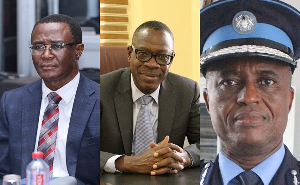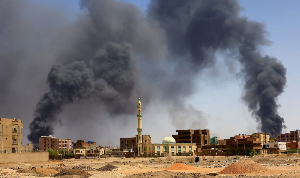A fellowship on clinical training in nuclear medicine to address the shortage of imaging medical physicists in Africa was opened in Accra on April 18,2023.
This comes on the heels of the maiden fellowship held in 2021, after a study conducted by the International Atomic Energy Agency (IAEA) and the Federation of African Medical Physicists Organization (FAMPO) revealed that Africa has only 200 imaging medical physicists instead of the over 4,000 needed to serve the continent.
The six-month fellowship being hosted by the Radiological and Medical Sciences Research Institute (RAMSRI) of the Ghana Atomic Energy Commission (GAEC) and the Nuclear Medicine Department of the Korle-Bu Teaching Hospital with sponsorship from the IAEA brings together eight participants from five African countries: Ethiopia, Kenya, Morocco, Sudan, and Tanzania.
The fellowship aims at strengthening and sustaining medical imaging services in Africa through academic education programs and clinical training, as well as effective diagnostic and interventional radiological practices to ensure healthy lives and promote the wellbeing of everyone.
Addressing the participants at the opening ceremony, the Director-General of GAEC, Prof. Samuel Dampare, announced that the fellowship starts on April 3, 2023, and ends on October 3, 2023.
He explained that several studies by the IAEA showed that even though there were medical physicists at the Radiotherapy Centres in the member states of the African Regional Cooperative Agreement for Research, Development, and Training Related to Nuclear Science and Technology (AFRA), the same could not be said of Nuclear Medicine and Diagnostic Radiological Centres.
"As a result, a task force group was setup to put together a training curriculum that was later harmonized for academic and clinical training in medical physics in Africa", he added.
"Currently, 11 countries, namely Ghana, Nigeria, South Africa, Kenya, Algeria, Egypt, Libya, Morocco, Sudan, Tunisia, and Zimbabwe, have academic programs in this regard", he indicated.
He admonished the participants to help their countries develop the competencies needed in nuclear medicine physics with the knowledge and experiences they would gain at the end of the fellowship.
"This is a very great opportunity provided by the IAEA, and I would want to encourage you all, fellows, to make the best out of the situation", he added.
The Director of RAMSRI at GAEC, Prof. Francis Hasford, reiterated the importance of the training to equip medical physicists with the needed competencies to become clinically qualified to practice independently in one or more of the subfields of medical physics.
Prof. Hasford, who is also the project scientific consultant, said the participants would be taken through 10 key areas. They are clinical awareness, performance testing of imaging equipment, radiation protection and safety, dosimetry instrumentation and calibration, and patient radiation dose audit.
The rest are image quality assessment, optimization of clinical procedures, technological management in nuclear medicine, radioactivity measurements and internal dosimetry, and performance testing of nuclear medicine equipment.
The fellowship supervisor, Dr. Theophilus Sackey, on his part, mentioned that there were a lot of expectations for the participants during the fellowship. He urged them to network among fellows and experts, gain knowledge of the harmonized protocol for quality control in nuclear medicine, and publish their works at the end of the fellowship, among other things.
Press Releases of Friday, 28 April 2023
Source: Raymond Baxey, Contributor













